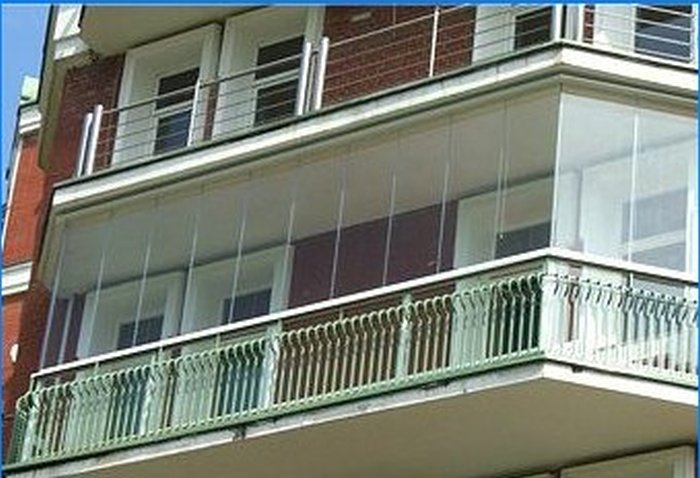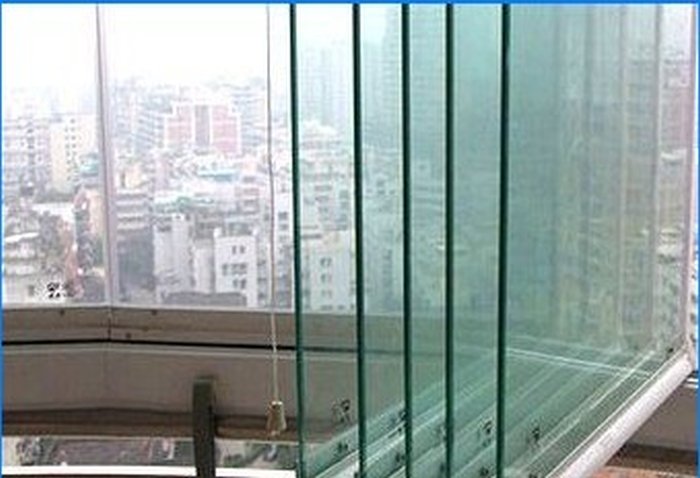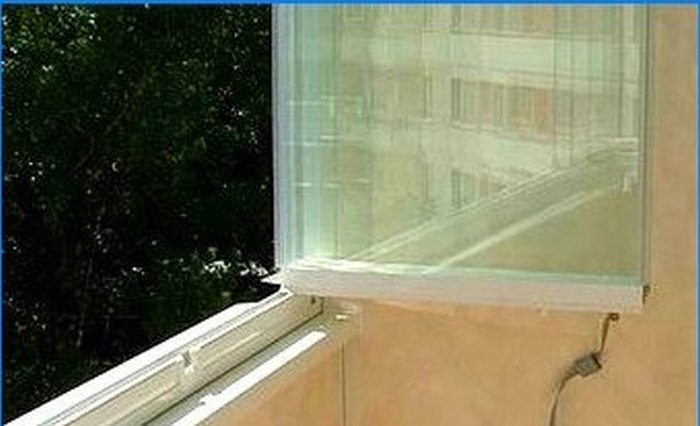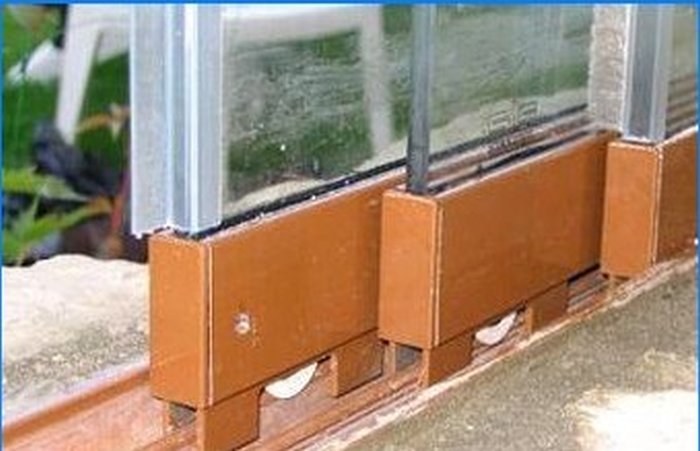Recommendation points
Today, you rarely see a non-glazed balcony. The balconies are usually glazed with wooden frames and glass is inserted into them or plastic windows are installed. But there is one more type of glazing – this is frameless glazing. This method of finishing was developed in Finland thirty years ago. There this type is used for glazing terraces and verandas. And over the years of its existence, the technique has been improved.

Where is applied
Today, the frameless glazing system can be seen on balconies and loggias, in cafes and restaurants, medical centers and office buildings. Can be installed on straight fronts and fronts with corners. This method can be used to glaze not only the upper part of the balcony, but its entirety. If you look from the street side to the balcony, finished with such a system, you can see a single glass sheet without racks, frames, and in general any retaining structures. It seems that the glasses are attached directly to the floor slabs. And what does a tall building look like with an entire wall of glass? This type of glazing is also applicable for tall buildings, but there are some nuances here..
Glass
Special glass is used in this system. During production, it is hardened – heated to a high temperature and sharply cooled. This is how a very strong glass is obtained that can withstand a load of over 400 kilograms and light, sharp blows (if there are trees near the windows or a strong wind affects it). Glass thickness – from 6 mm to 12 mm. And if the window was broken in an incomprehensible way (they deliberately hit with a heavy object and more than once), it crumbles into small pieces that cannot do much harm. The thickness of the glass directly depends on its size. The more a sheet of glass has a width and height, the thicker it will be..

For a standard balcony (not in a high-rise building) glass with a thickness of 6 mm is used, if the height of the sheet is from two meters to ten, the required thickness is 8 mm. When glazing a room on a high floor or with large dimensions, the minimum thickness is 10 mm. Glass is produced with a width of 60-80 cm. It all depends on the customer’s requirements.
Fasteners
For this system, materials with increased strength are used. Stainless steel is used for the production of fasteners. Aluminum profiles are not affected by weather conditions. Plastic fittings do not lose their elasticity either in heat or severe frosts. For easy sliding of the web, roller bearings with ball bearings are used.

A guide profile is attached to the upper and lower floors with special bolts. Installation accuracy is maximum, permissible deviation is 1 mm. The profile must exactly follow the shape and curves of the floor. The profile has movable hinges, due to which the glasses move. Casement profiles are put on the glass at the top and bottom of the sheet.
Kinds
Frameless glazing in our market is presented in the form of two systems. The first system is PANORAMA. It is considered an elite species with unique advanced features. When the shutters are closed, it is not noticeable. The balcony can be completely “exposed” by moving the doors and turning them towards the wall. The flaps move not only on a flat surface, but also move through the corners. This makes it possible to use it on any building facade. The doors fold like a book and do not take up much space. When closed, the sashes snap into place. Their ability to move and rotate makes glass washing an elementary cleaning method. The system is highly resistant to wind and atmospheric loads. Being a fence, it does not allow precipitation to fall on the balcony, reduces the permeability of street noise into the room. Keeps the wind out. The gaskets between the leaves, made of transparent polymer, are not visible on the glass. Extra strong, tempered glass. All fasteners for glazing installation have high strength properties. Maintenance of the structure consists in cleaning the guides from dust and dirt, and once a year, moving parts should be treated with silicone spray..

The METROPOL system is a frameless glazing with limited functions. This system allows the sash to move only along a straight surface without corners. Roller carriages are used to move them. The flaps move to the side and are removed one by one, as if folding into a pack. It has one profile at the bottom – 2 rails, the glazing is retracted by 50% or two – 4 rails, the open area will be 75%. A brush seal is applied between the leaves.

Advantages of frameless glazing
It is used for any configuration of the balcony, does not spoil the appearance of the building. Ease and accessibility to use, the ability to completely remove the glazing. All materials are of the highest quality, made using a unique technology. Protects against noise, wind and precipitation. Easy care. Long service life. The greatest tolerance to the room of natural light.
disadvantages
Poor thermal insulation. Such a fence is of an aesthetic purpose and is not suitable for a warm balcony. Due to the lack of frames and stands, mosquito nets are not possible to protect against insects. There are small gaps in the fence through which moisture can enter the balcony. Low noise absorption. When installed in high-rise buildings, on upper floors, glass can sag in strong winds and make an unpleasant sound.

What are the advantages and disadvantages of frameless glazing for balconies and loggias? Can it provide better insulation and noise reduction compared to traditional framed options? Does it require significant maintenance or have a shorter lifespan? How does it affect the overall aesthetics of the building? Are there any specific safety considerations to keep in mind with frameless glazing?
Frameless glazing for balconies and loggias offers several advantages. It provides unobstructed views, enhances natural light penetration, and offers a sleek and modern appearance to the building. Additionally, frameless glazing can improve insulation and noise reduction compared to traditional framed options. However, it requires regular maintenance to ensure proper functioning and a longer lifespan.
While frameless glazing enhances aesthetics, it might also impact the overall design of the building. Integration into existing structures can be challenging, requiring careful planning and expertise. Safety considerations are crucial, especially in high-rise buildings, as frameless glazing must meet safety codes and regulations to prevent accidents and ensure structural stability. Overall, frameless glazing is a viable option, offering benefits in terms of views, insulation, and noise reduction, but it requires ongoing maintenance and careful safety planning.
How secure and durable is frameless glazing for balconies and loggias? Are there any advantages in terms of noise reduction or insulation compared to traditional framed glazing options?